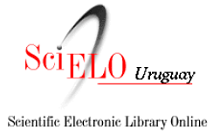Description of a case of equine cutaneous pythiosis and its diagnosis by means of different techniques
DOI:
https://doi.org/10.29155/VET.55.212.8Keywords:
Pythiosis, Kunkers, Pythium insidiosum, Equine, OomycotaAbstract
Pythiosis is a disease widely distributed worldwide caused by Pythium insidiosum. It is transmitted and propagated in semi-aquatic environments, mainly affecting equines, canines, felines, cattle and humans. In Paysandú County, Uruguay, in the month of May 2017, a case of pitiosis was registered in a 24-year-old Creole breed female equine. An extensive circular lesion located in the ventral abdominal area was surgically removed. Macroscopically, it was observed granulation tissue, multifocal areas of necrosis with suppurative hemorrhagic content and yellowish-white pasty to chalky concretions. At the histopathological examination with H&E stain there was of notice diffuse ulceration of the epidermis; in superficial and deep dermisthere were severe proliferation of connective tissue, neovascularization, multifocal areas of necrosis surrounded by infiltration of polymorphonuclears, mainly eosinophils, and macrophages. Inside of the areas of necrosis there was presence of hyphae stained positively by the argentic Grocott stain. Positive immunostaining was obtained for P. insidiosum. In the culture of the fresh material, colonies of whitish color and radial growth were isolated with the development of aerial mycelia after 48 hours. The isolation of P. insidiosum was confirmed by the induction of zoospores and the characterization of them. The ITS region (ITS1, 5.8S, ITS2) was amplified by the nested PCR reaction and in a second reaction the gene specific for P. insidiosum from the ITS1 region was amplified. The sequence obtained was compared with that registered in GenBank confirming a 100% homology with P. insidiosum.











